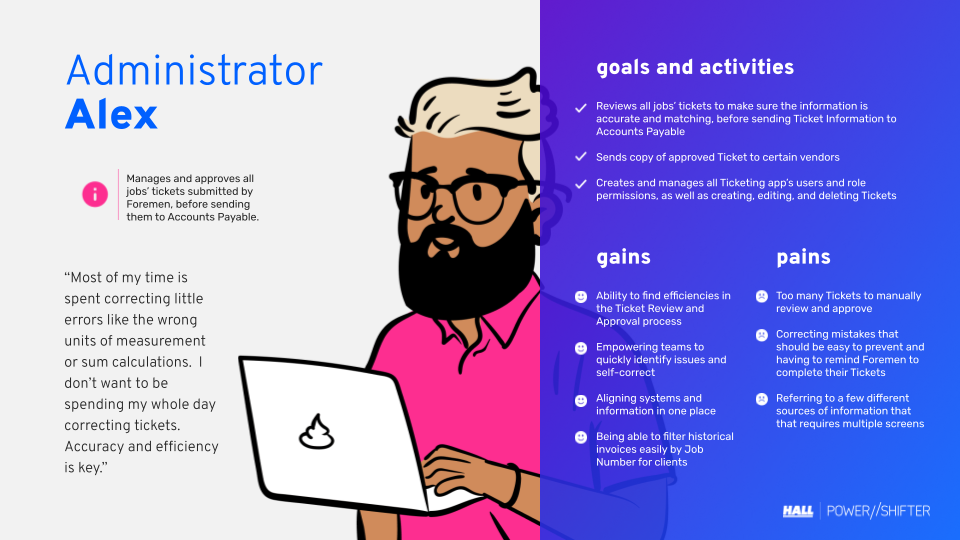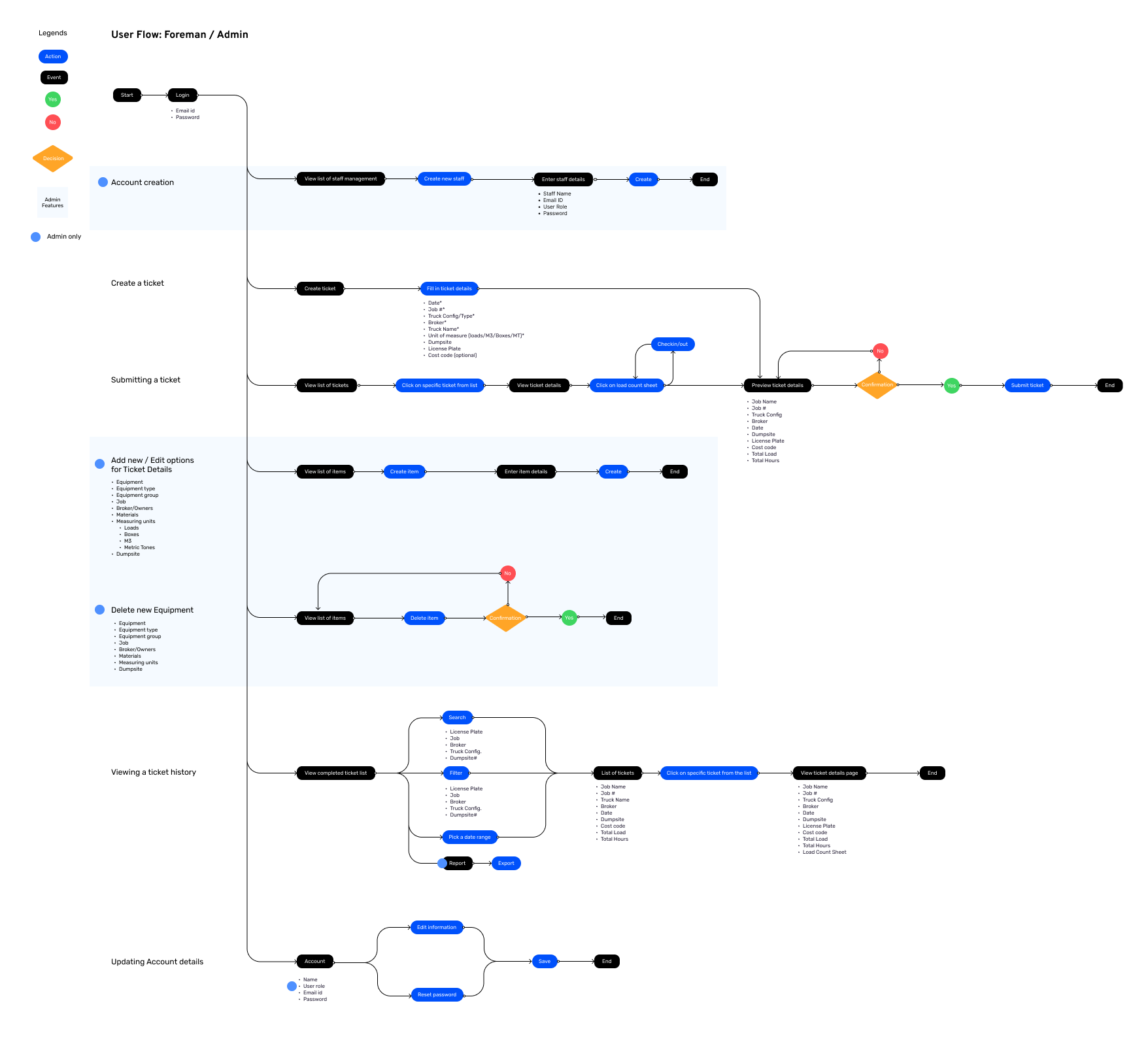From papers to pixels
A robust digital ticketing system designed with high-contrast visuals in mind for outdoor use and to help foreman register trucks easily.
Client
Hall Constructor
My Role
UX Research, UX/UI Design, Prototyping and Testing
Agency
Power Shifter Digital
Year
2023
Challenge
Hall Constructors, a leader in site preparation and excavation services, faced significant inefficiencies due to a paper-based ticketing system for truckload management. The goal was to create a reliable, intuitive system.
RESEARCH
How do foremen use the Ticketing System?
We conducted stakeholder interviews because direct access to foremen was limited. Management provided insights into key functionalities required for successful adoption.
Insights & Findings
In the interviews with the stakeholders, we learned how they were using the current tool and the inefficiencies they faced due to a paper-based ticketing system for truckload management:
Manual data entry resulted in frequent errors and inefficiencies.
Delays in reconciliation and invoicing.
Previous digital tools were unsuccessful due to poor usability in field conditions.
Foremen required a user-friendly solution that functioned well with gloves and in bright conditions sunlight.
How might we create a reliable, intuitive system?
The insights gathered effectively laid the groundwork for developing comprehensive personas, an intricate journey map, cohesive user flows, and a structured sitemap.
Project Goals
Eliminate errors caused by manual ticketing
Improve efficiency in truckload tracking and invoicing
Encourage adoption among foremen through intuitive design
Equip Hall with the right tools for a digital transformation
DEFINITION
Personas
Journey map
User flow
ERD
Sitemap
IDEATION
Wireframing
Workshops were conducted with stakeholders to align on key functionality and usability priorities. Before developing the final solution, we focused on ideation and wireframing. We refined the design to address key usability challenges by collaborating with stakeholders.
DESIGN
The Sunlight
To scale, the design system developed for this project seamlessly integrates Hall’s brand colour, the red, strategically utilizing its vibrant tones to evoke a strong emotional response while enhancing usability. By establishing a cohesive palette incorporating shades of red and grey, we created a hierarchy directing user attention to key actions and information. Typography and iconography were meticulously chosen to complement this dynamic colour, ensuring that the visual language remains consistent across all touchpoints.
We translated the designs into interactive Figma prototypes and conducted hands-on testing with foremen using iPads. This real-world testing provided critical feedback, allowing us to refine the system’s design for practicality and efficiency in field conditions, and we quickly learned why previous digital attempts failed due to poor usability in outdoor settings:
Screen visibility in sunlight: designs needed to emphasize high-contrast visuals.
Interaction challenges while wearing gloves: large buttons to ensure usability in bright outdoor conditions and compatibility with gloves.
Before: Load count sheet, the sheet in which crew members manually write out truck information and cycle times of trucks.
After: The digital ticketing system that significantly improved efficiency, reducing errors and streamlining the process of tracking and invoicing truckloads
TESTING
Validate, validate, validate
Once the design was validated through testing, we moved to implementation, ensuring the solution met both user needs and technical requirements. The final design incorporated high usability features tailored to foremen working in outdoor environments.
Outcomes & Impact
Implementing the new digital system is expected to bring measurable efficiency, accuracy, and adoption improvements and successfully replace the error-prone paper-based process by addressing foremen's usability challenges.
REFLECTIONS
This project reinforced the importance of user-centred design and iterative testing in creating digital solutions for field-based industries. Overcoming adoption challenges required functional improvements and intuitive design tailored to real-world conditions.
Challenges Faced
Overcoming resistance to digital adoption.
Designing for usability in challenging outdoor conditions.
Key Takeaways
Early and continuous user involvement is critical for adoption.
MVP approach allowed for iterative improvements based on real-world testing.





